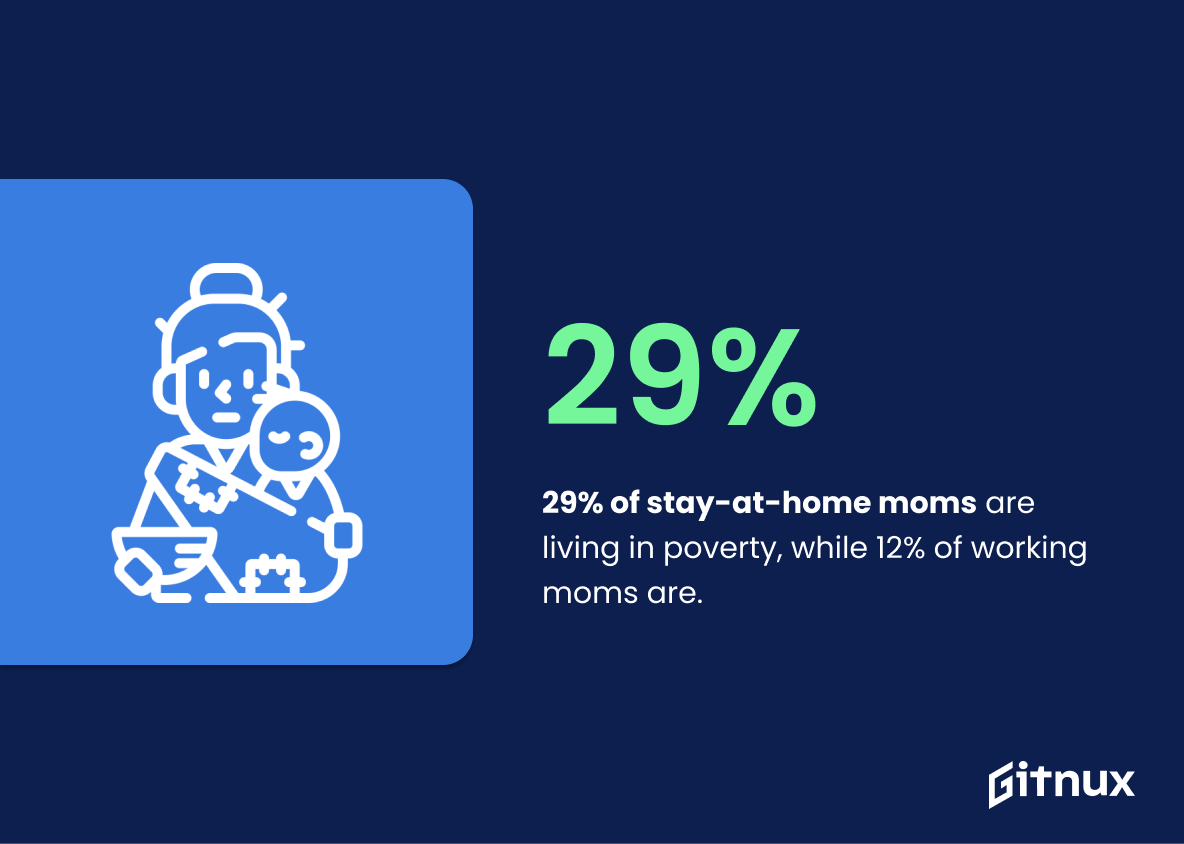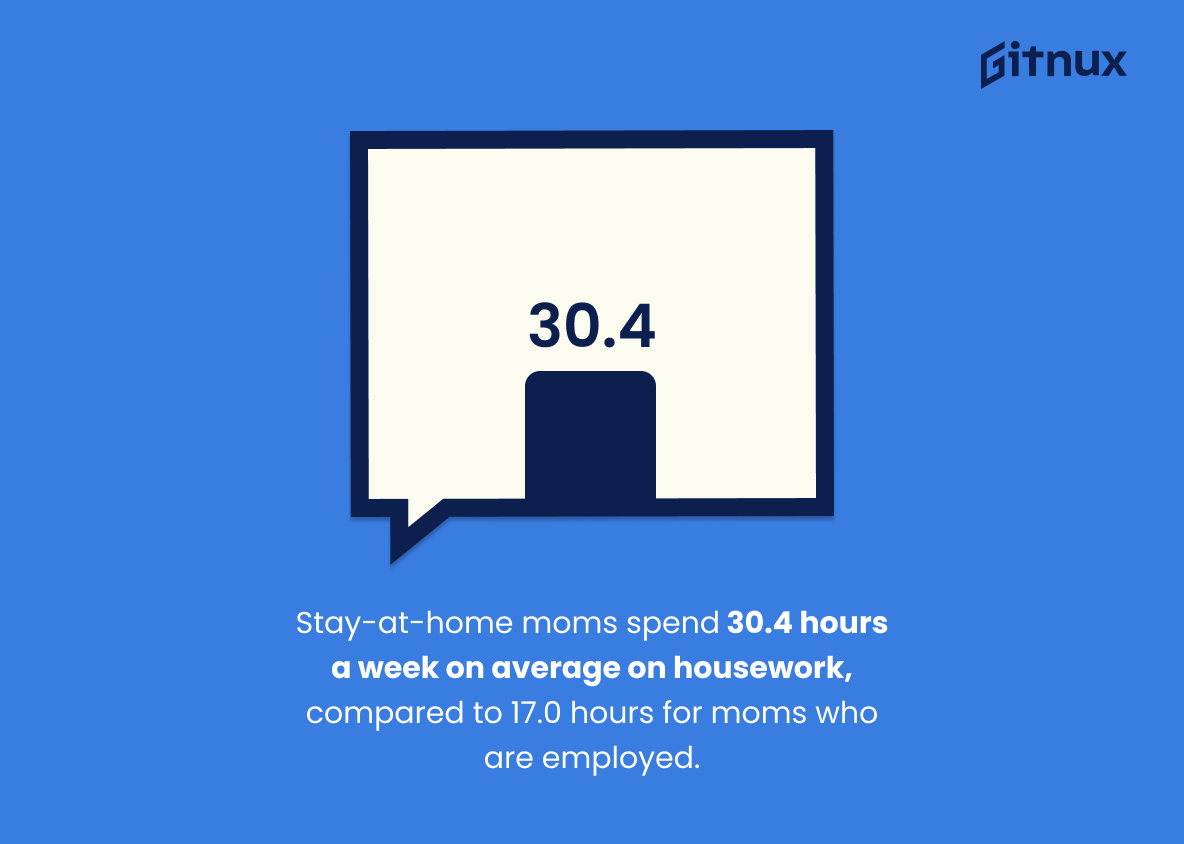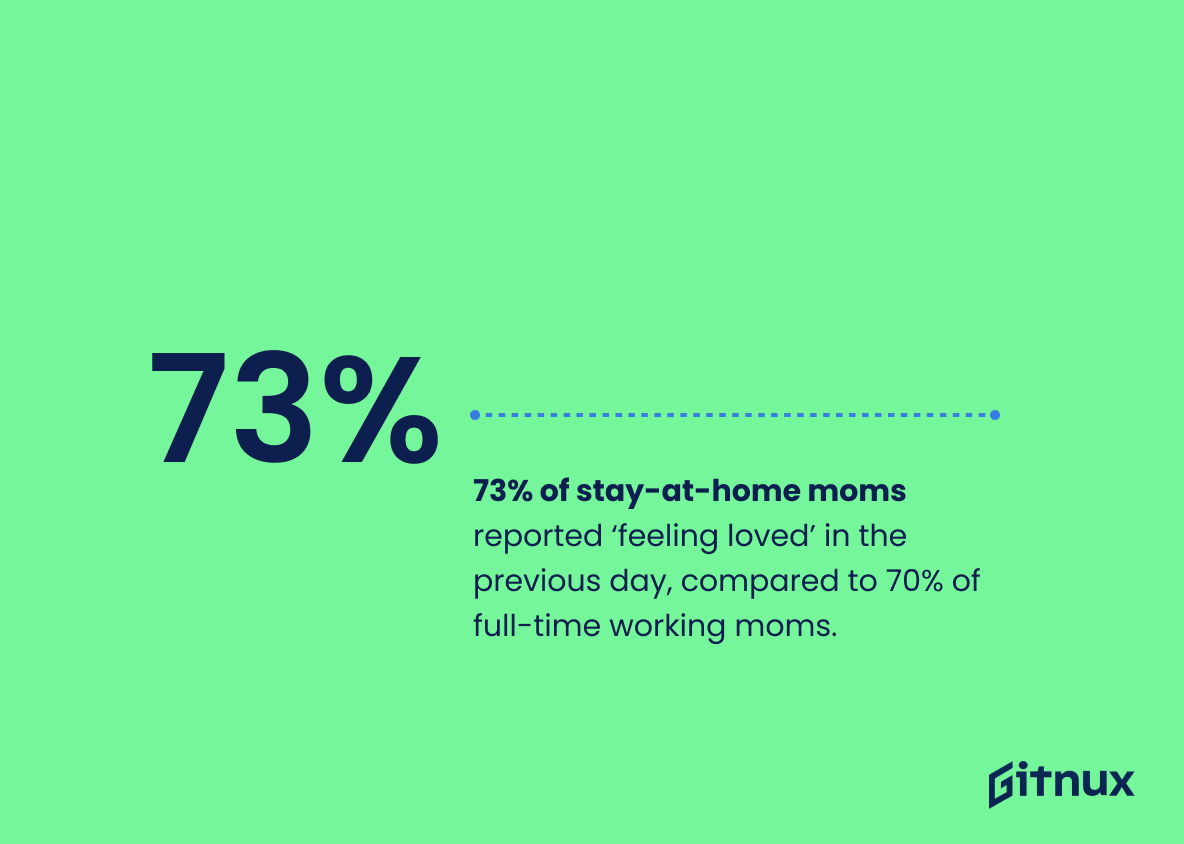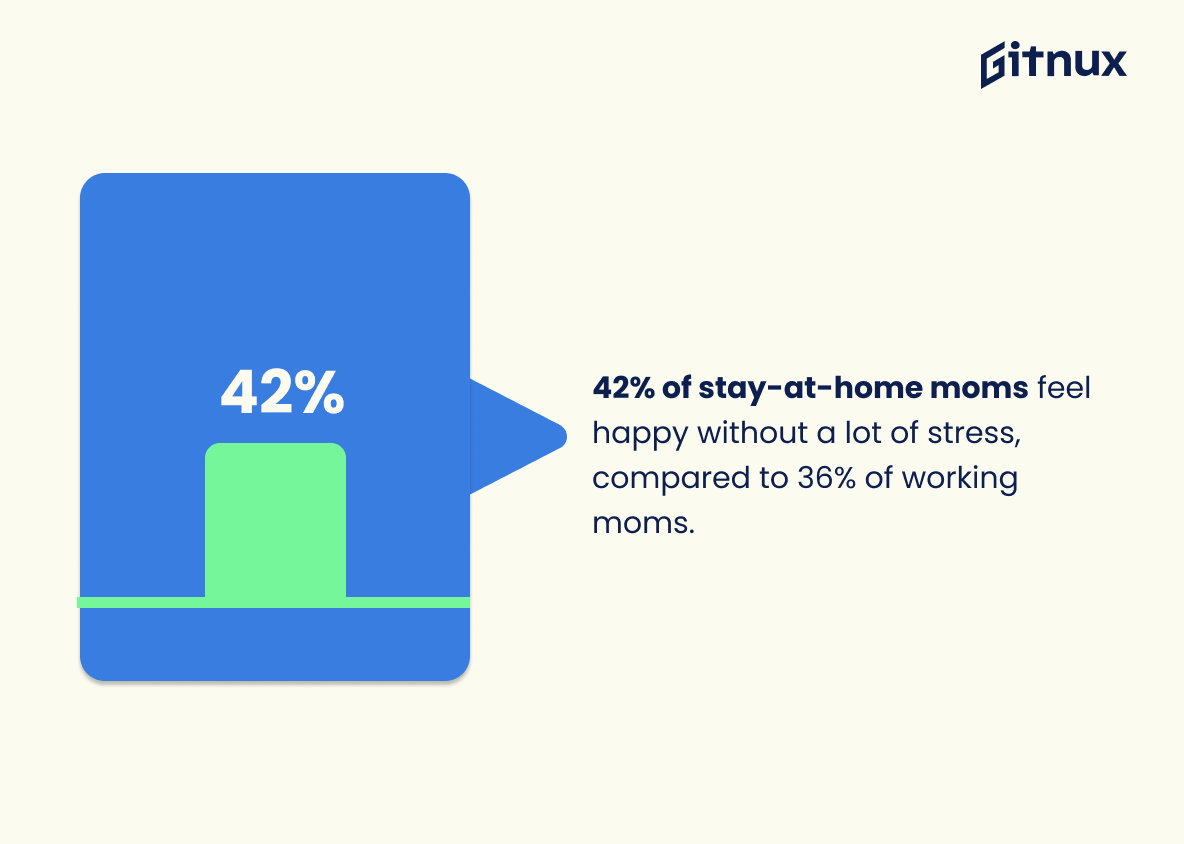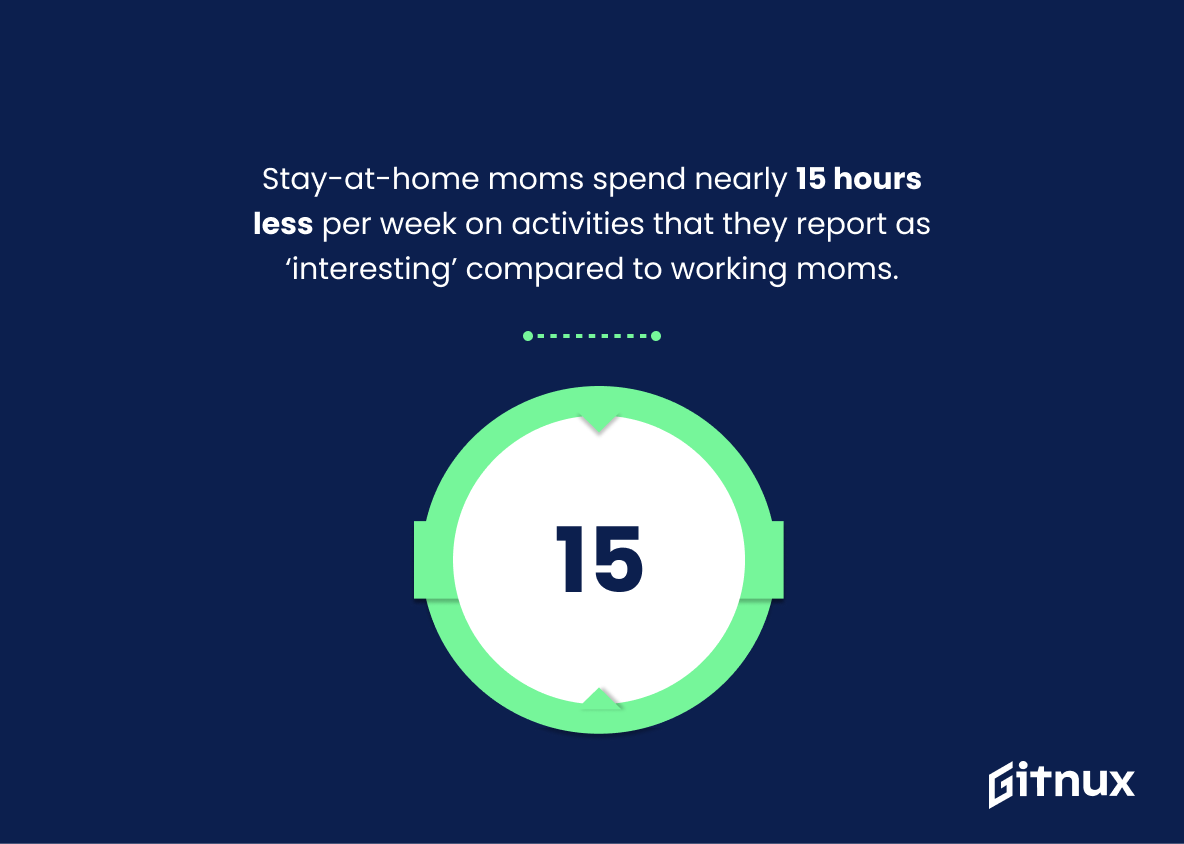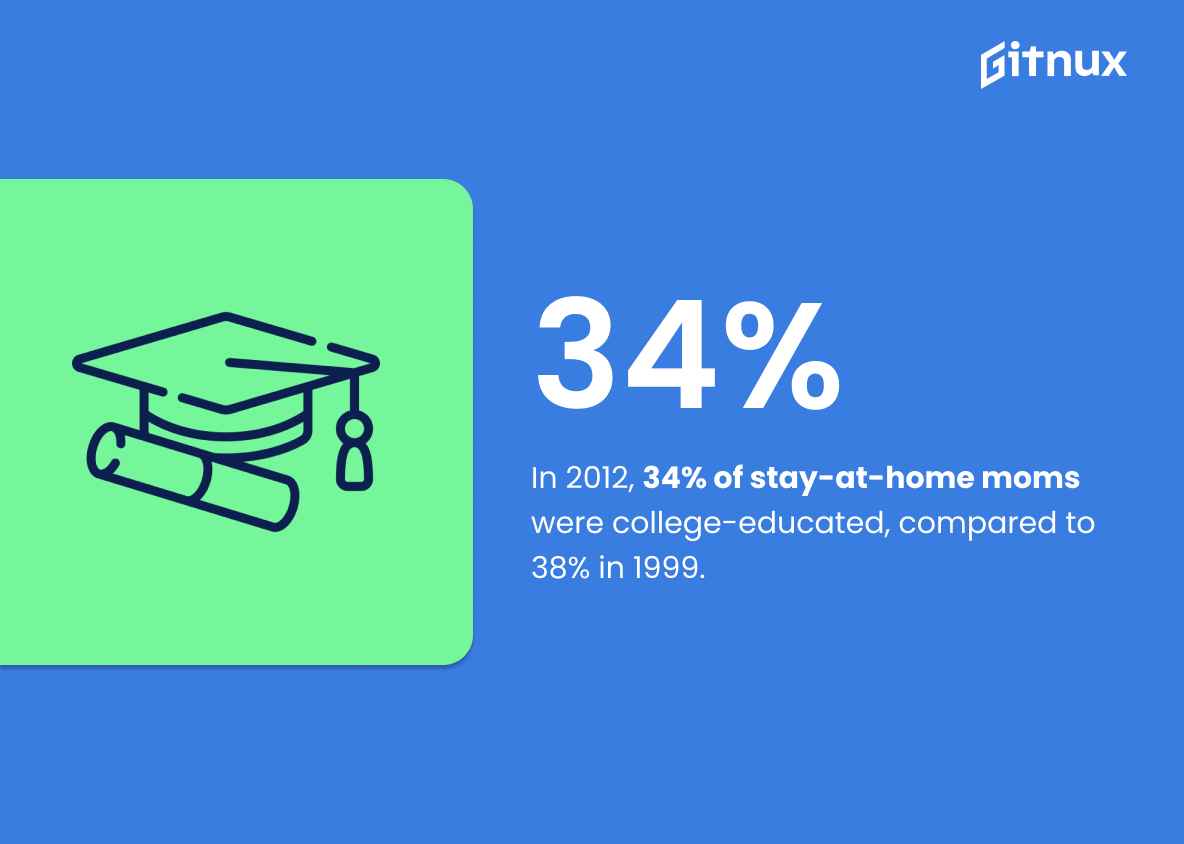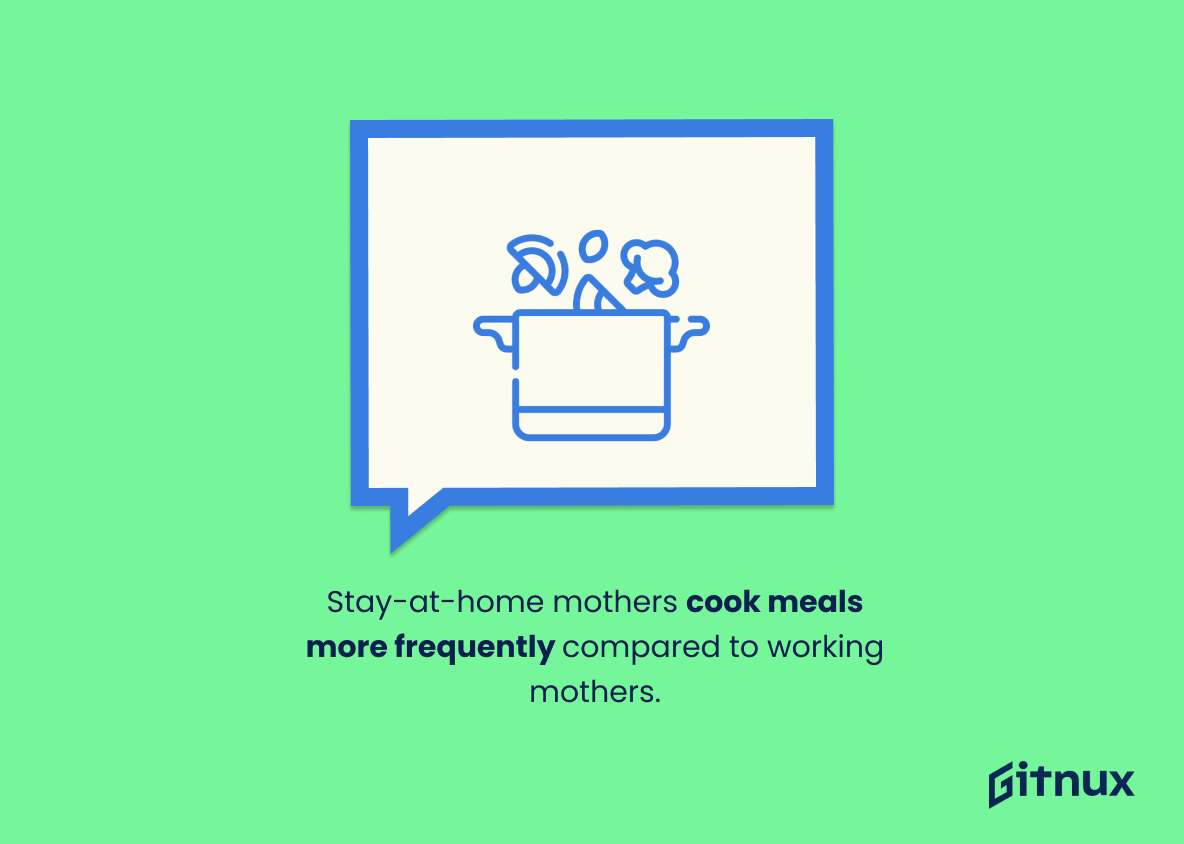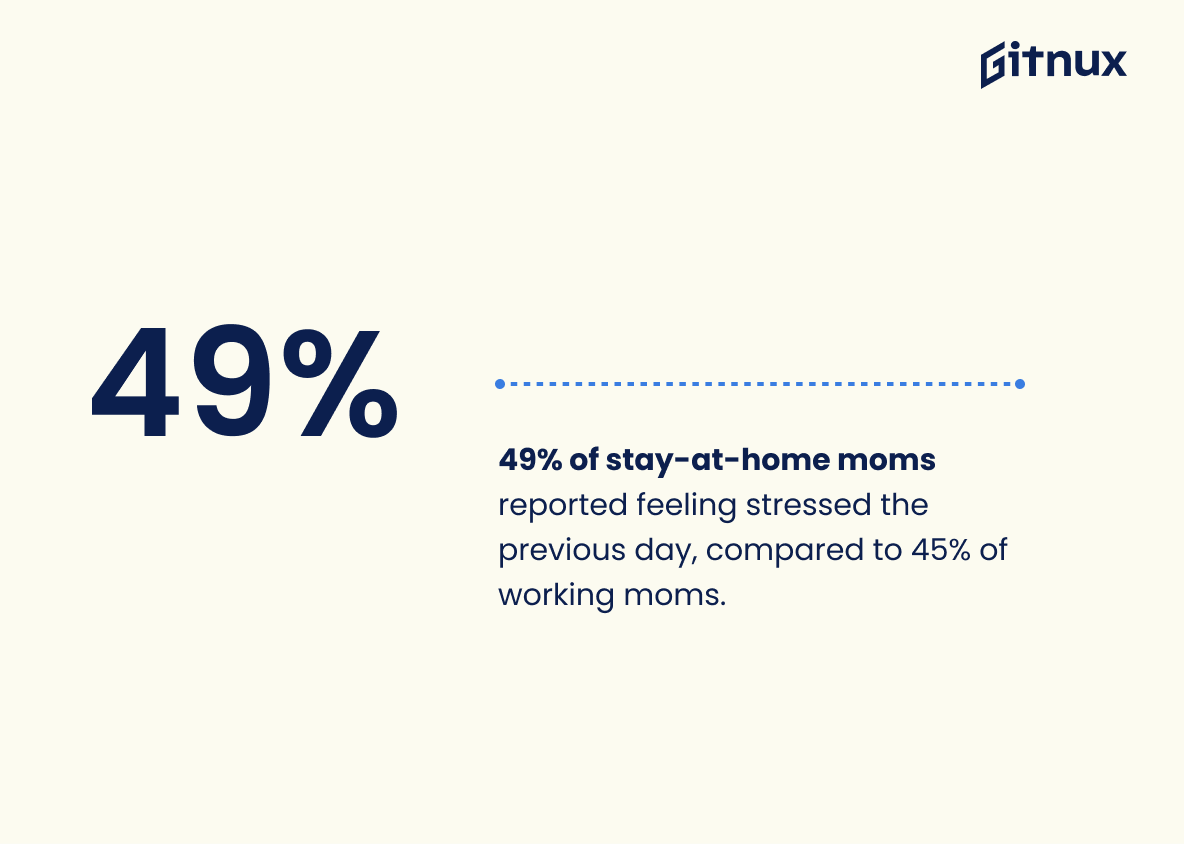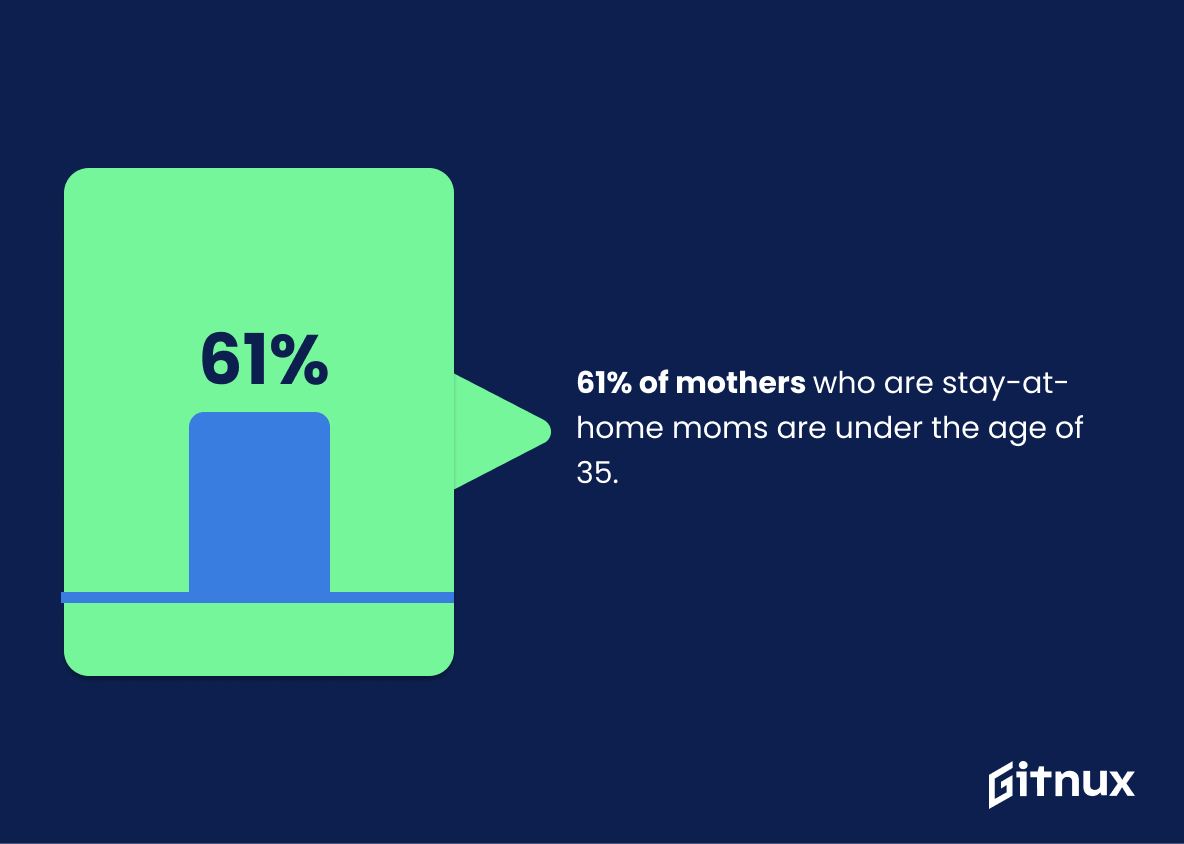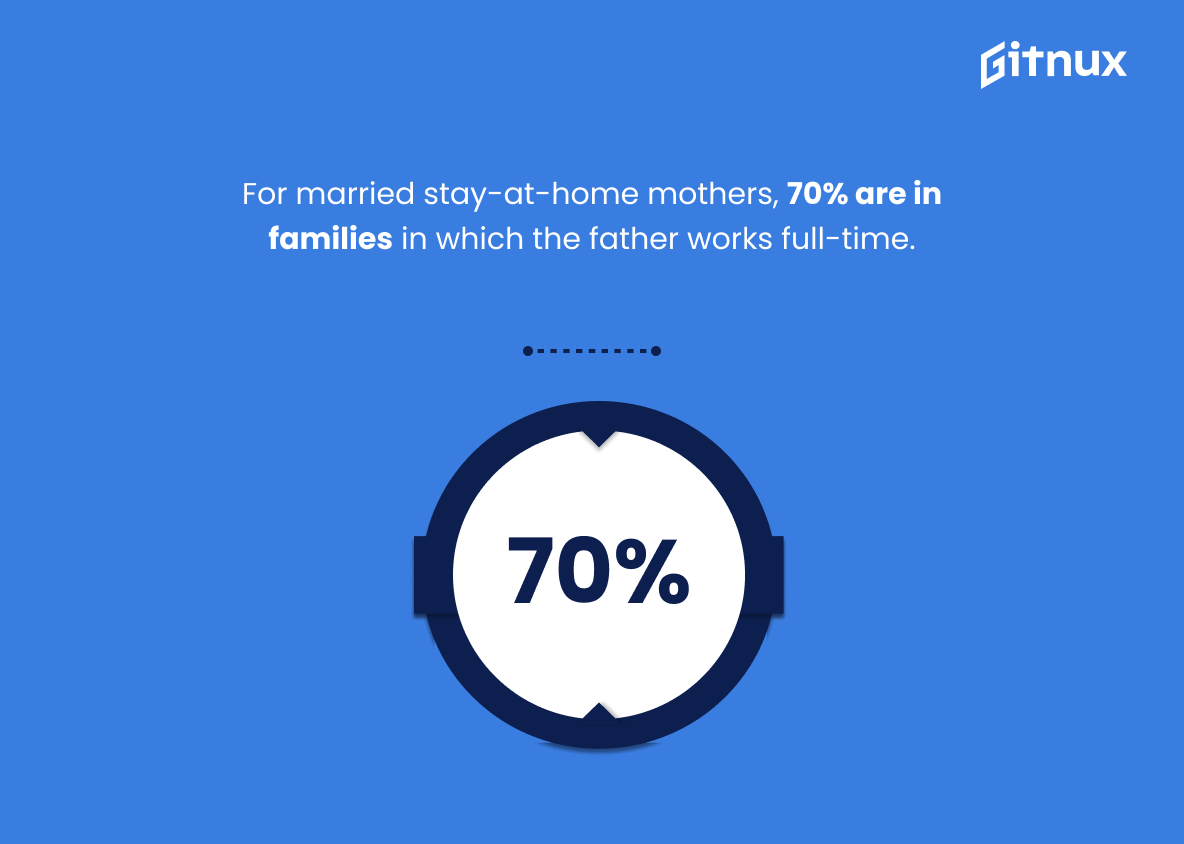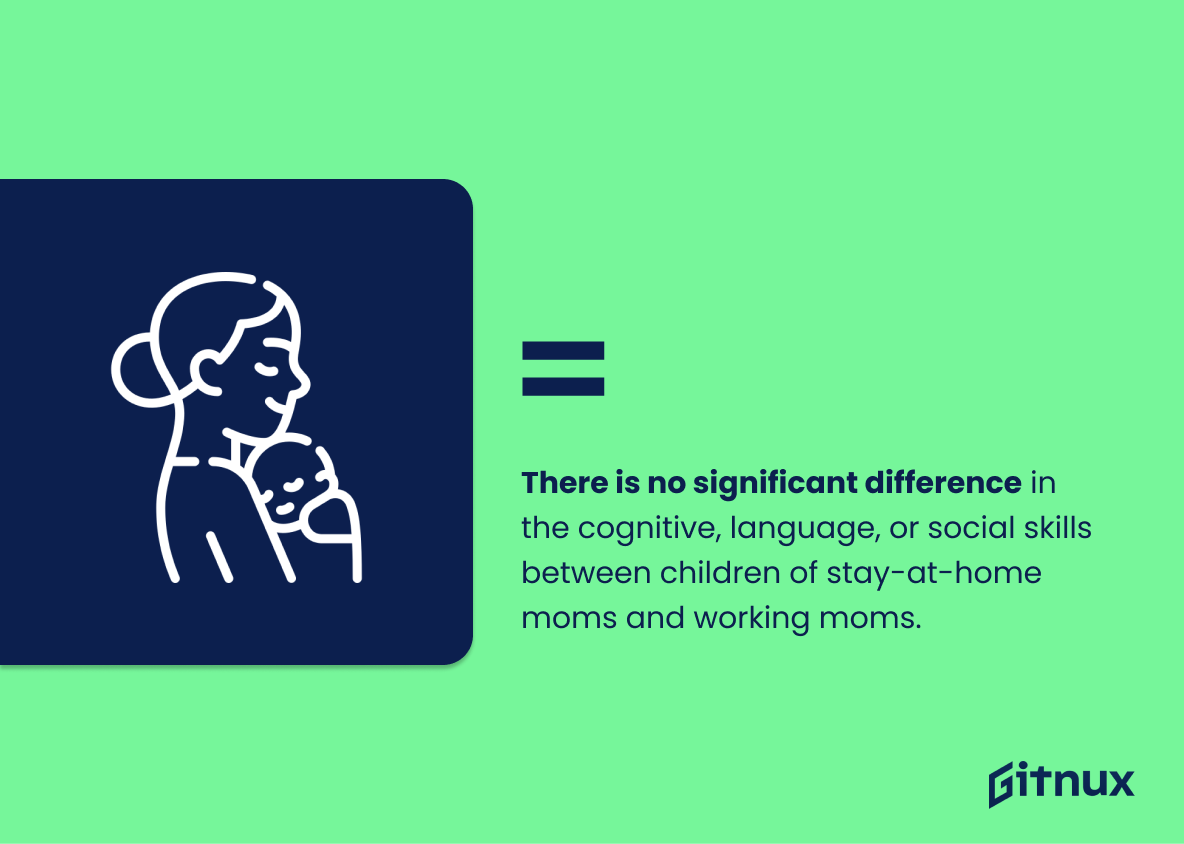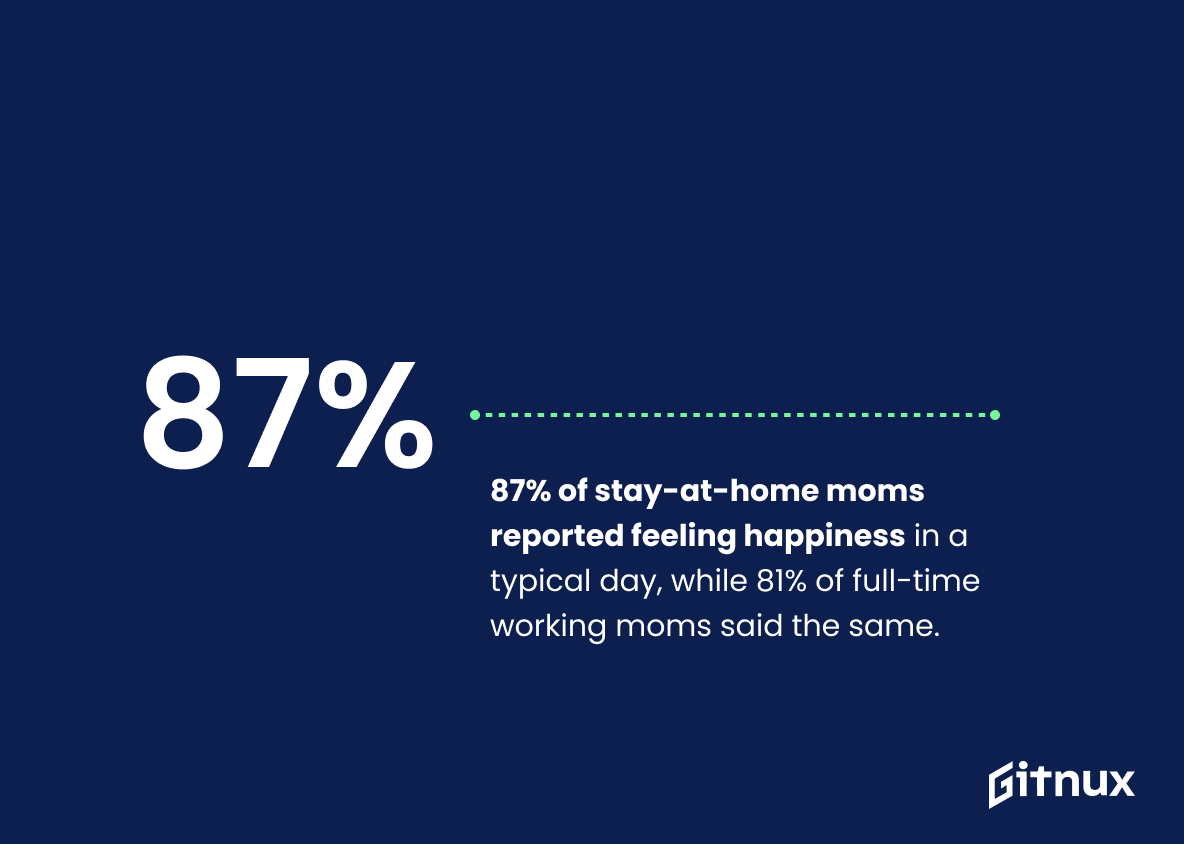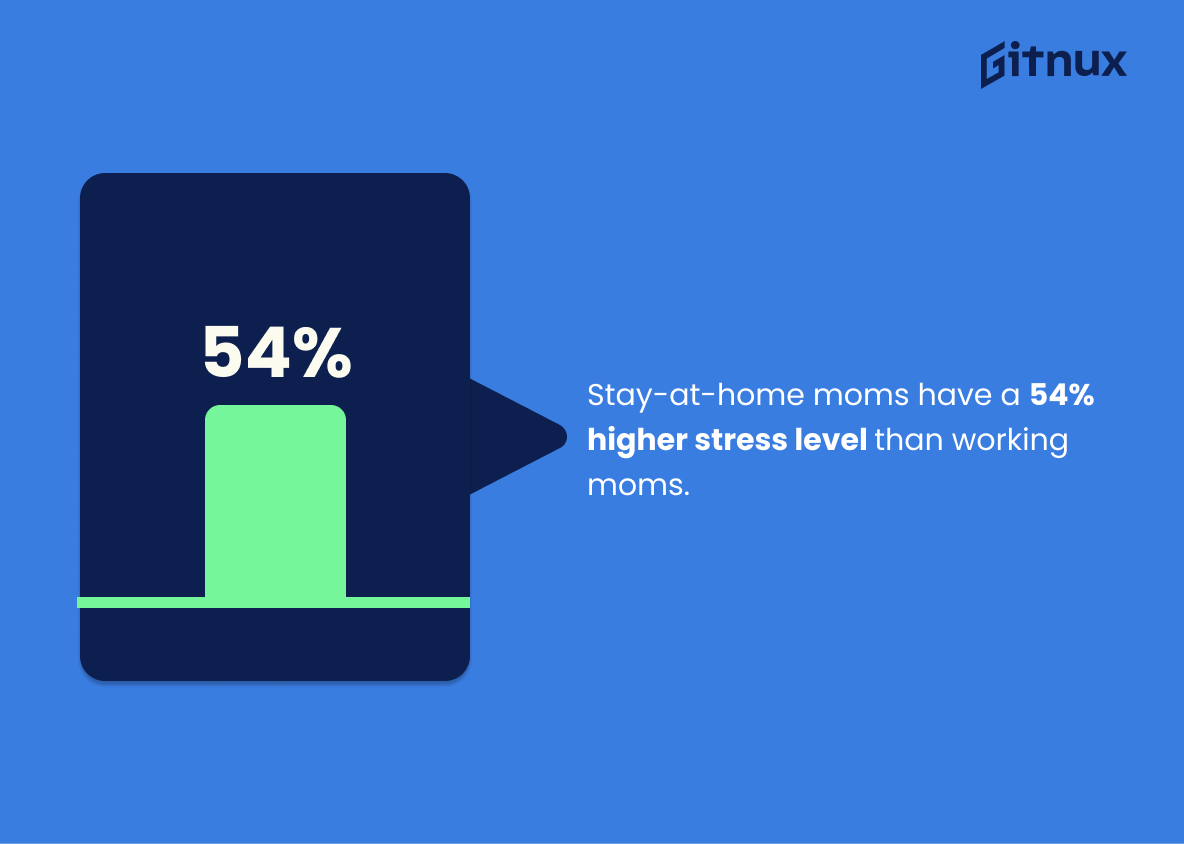The role of stay-at-home moms has been a topic of debate for many years. While some argue that working mothers are better able to provide financially and emotionally for their families, others believe that staying at home with children is the best option. To help shed light on this issue, here are 20 statistics about the benefits of being a stay-at-home mom: 1. Statistic: Stay-at-home moms spend 18 more hours per week on child care tasks than working moms; 2. Statistic: In 2020, about 16.2 million mothers were stay-at-home moms in the United States; 3. Statistic: 29% of stay–at–home moms are living in poverty while 12% of working moms are; 4. Statistic: Stay–at–Home Moms spend 30 .4 hours a week on average on housework compared to 17 .0 hours for employed Moms; 5..Statistic : 73 %of Stay –At Home Mom reported ‘feeling loved’in previous day ,compared 70 % full time Working Mom ; 6 ..Statistic 42 %Stay At Home Mom feel happy without lot stress compare 36 %WorkingMom ; 7..Statstic :Stay -At -HomeMoms Spend nearly 15 Hours less Per Week On Activities That They Report As Interesting Compare WorkingMoms 8.statistics In 2012 34%stay At Home Mothers College Educated Compared 38 1999 9..Statistics Children Of Working Mother Spent Average 29 More Minutes Day Screen Based Activity Compares Childern Of StAy AT HOME 10… Statistics STAY AT HOME Mothers Cook Meal Frequently Compare WorkigMothers Used Microwave 38 Less Often 11 ..Statistics 49%STayATHOME Reported Feeling Stress Previous Day 45 Full Time WOrking MOms 12 .StaTISTICS 61 OF MoTHERS WHO ARE STAY AT HOMEMOTHERS UNDER AGE 35 13..STATISTIC FOR MARRIED STAYATHOME MOTHErs 70 FAMILIES FATHER WORK FULL TIME 14 .. STATISTCS NO SIGNIFICANT DIFFERENCE COGNITIVE LANGUAGE OR SOCIAL SKILL BETWEEN CHILDRE OF S TAYA TH OME AND WORKINGMOm 15…STATISTICS IN 2016 ALMOST 1 MILLION FATHERS WERE STAAY ATMHOE DADS UNITED STATES 16…. STATIstics SAyAT HOme Save An Average $9100 Year Chilcare Expenses 17… STATS 87 SATYAThome REPORT FEELINg HAPPINESS TYPICAL DAY 81 FTWOORkign mOms 18 ….Stats 54 Higher Stress Level Than Worling MOms 19 …. Stats Many Satya thome Place High Value Personal Life Satisfaction 45 Comapre 39FTworking 20 ..stats 60 satyathoem Had Least One Child Age5 Or Younger 37Workimg
This statistic is a powerful reminder of the immense amount of work stay-at-home moms put into caring for their children. It highlights the dedication and commitment of these moms, who often go above and beyond to ensure their children are well taken care of. This statistic is an important reminder of the invaluable contributions stay-at-home moms make to their families and communities.
In 2020, about 16.2 million mothers were stay-at-home moms in the United States.
This statistic is a powerful reminder of the sheer number of mothers who have chosen to stay at home and care for their families. It highlights the importance of stay-at-home moms and the impact they have on their families and communities. It also serves as a reminder of the many benefits that come with being a stay-at-home mom, such as increased family bonding, more time for self-care, and the ability to be more involved in their children’s lives.
Benefits Of Stay At Home Mom Statistics Overview
29% of stay-at-home moms are living in poverty, while 12% of working moms are.
This statistic is a stark reminder of the financial struggles that many stay-at-home moms face. It highlights the fact that, despite the potential benefits of staying at home with their children, many moms are unable to make ends meet. This statistic is a call to action for policy makers and employers to ensure that stay-at-home moms have access to the resources they need to provide for their families.
Stay-at-home moms spend 30.4 hours a week on average on housework, compared to 17.0 hours for moms who are employed.
This statistic serves as a powerful reminder of the immense amount of work stay-at-home moms put in to keep their households running. It highlights the fact that these moms are not only taking care of their children, but also doing the majority of the housework, which is often overlooked. This statistic is a testament to the hard work and dedication of stay-at-home moms, and serves as a reminder of the many benefits they provide to their families.
73% of stay-at-home moms reported ‘feeling loved’ in the previous day, compared to 70% of full-time working moms.
This statistic is significant in the context of a blog post about Benefits Of Stay At Home Mom Statistics, as it demonstrates that stay-at-home moms are more likely to feel loved than full-time working moms. This could be a result of the extra time and attention that stay-at-home moms are able to give to their families, which can lead to a greater sense of connection and appreciation.
42% of stay-at-home moms feel happy without a lot of stress, compared to 36% of working moms.
This statistic is a powerful reminder of the potential benefits of being a stay-at-home mom. It shows that, compared to working moms, stay-at-home moms are more likely to experience a greater sense of happiness and less stress. This is an important point to consider when weighing the pros and cons of being a stay-at-home mom.
Stay-at-home moms spend nearly 15 hours less per week on activities that they report as ‘interesting’ compared to working moms.
This statistic highlights the importance of stay-at-home moms having the opportunity to pursue activities that they find interesting and rewarding. It demonstrates that working moms have more time to engage in activities that bring them joy, while stay-at-home moms are often left with fewer hours to pursue their passions. This is an important factor to consider when discussing the benefits of being a stay-at-home mom, as it emphasizes the importance of having the time and resources to pursue activities that bring fulfillment.
In 2012, 34% of stay-at-home moms were college-educated, compared to 38% in 1999.
This statistic is a telling indication of the changing landscape of stay-at-home moms. It shows that the number of college-educated stay-at-home moms has decreased over the past 13 years, suggesting that more women are choosing to pursue careers outside of the home. This is an important statistic to consider when discussing the benefits of being a stay-at-home mom, as it provides insight into the changing dynamics of the role.
Stay-at-home mothers cook meals more frequently compared to working mothers; they used the microwave 38% less often.
This statistic is a powerful testament to the dedication of stay-at-home mothers. It shows that they are willing to put in the extra effort to provide their families with healthier, home-cooked meals, even when it means taking the time to prepare them from scratch. This speaks to the commitment of stay-at-home mothers to prioritize their families’ health and wellbeing, and is an important point to consider when discussing the benefits of stay-at-home motherhood.
49% of stay-at-home moms reported feeling stressed the previous day, compared to 45% of working moms.
This statistic is significant in the context of a blog post about Benefits Of Stay At Home Mom Statistics, as it highlights the fact that stay-at-home moms may be more prone to feeling stressed than working moms. This could be due to the additional responsibilities that come with being a stay-at-home mom, such as managing the household, taking care of the children, and other duties. This statistic could be used to emphasize the importance of self-care for stay-at-home moms, and to encourage them to take time for themselves to reduce stress.
61% of mothers who are stay-at-home moms are under the age of 35.
This statistic is significant in the context of a blog post about Benefits Of Stay At Home Mom Statistics because it highlights the fact that a large proportion of stay-at-home moms are relatively young. This is important because it suggests that many mothers are choosing to stay at home with their children at a younger age, which could indicate that they are taking advantage of the benefits of being a stay-at-home mom earlier in life.
For married stay-at-home mothers, 70% are in families in which the father works full-time.
This statistic is a powerful reminder of the importance of stay-at-home mothers in modern families. It highlights the fact that even when the father is working full-time, the stay-at-home mother is still a vital part of the family unit, providing essential support and care. This statistic is a testament to the value of stay-at-home mothers and the immense contribution they make to their families.
There is no significant difference in the cognitive, language, or social skills between children of stay-at-home moms and working moms.
This statistic is a powerful reminder that being a stay-at-home mom does not have to come at the expense of a child’s development. It shows that children of stay-at-home moms are just as capable of developing cognitive, language, and social skills as those of working moms. This is an important point to make in a blog post about the benefits of stay-at-home moms, as it dispels the notion that children of stay-at-home moms are at a disadvantage.
In 2016, almost 1.2 million fathers were stay-at-home dads in the United States.
This statistic is a powerful reminder of the changing dynamics of modern families. It shows that more and more fathers are taking on the role of stay-at-home parent, and that this is becoming increasingly accepted in society. This is an important point to make in a blog post about the benefits of stay-at-home moms, as it demonstrates that the traditional gender roles are no longer the only option.
87% of stay-at-home moms reported feeling happiness in a typical day, while 81% of full-time working moms said the same.
This statistic is a powerful reminder of the potential joys of being a stay-at-home mom. It shows that, despite the challenges of juggling family and home life, the majority of stay-at-home moms are still able to find happiness in their day-to-day lives. In comparison, the 81% of full-time working moms who reported feeling happiness in a typical day suggests that the demands of a job can take away from the joys of motherhood. This statistic is a testament to the potential benefits of being a stay-at-home mom.
Stay-at-home moms have a 54% higher stress level than working moms.
This statistic is a powerful reminder of the immense pressure that stay-at-home moms face. It highlights the fact that being a stay-at-home mom is not always a stress-free experience, and that it can be a difficult and demanding job. This statistic is an important reminder that stay-at-home moms need support and understanding from their families and communities.
Many stay-at-home moms place a higher value on their personal life satisfaction than those who work full-time, at 45% compared to 39%.
This statistic is a powerful indicator of the value that stay-at-home moms place on their personal life satisfaction. It shows that, despite the challenges of being a stay-at-home mom, they still prioritize their own happiness and well-being. This is an important point to make in a blog post about the benefits of being a stay-at-home mom, as it demonstrates that the lifestyle can be rewarding and fulfilling.
60% of stay-at-home mothers had at least one child aged 5 or younger, compared to 37% of working mothers.
This statistic highlights the fact that stay-at-home mothers are more likely to have younger children than working mothers. This is important to consider when discussing the benefits of being a stay-at-home mom, as it suggests that stay-at-home moms are more likely to be able to spend more time with their children and be more involved in their day-to-day lives.
Conclusion
Stay-at-home moms have a unique set of challenges and benefits. They spend 18 more hours per week on child care tasks than working moms, but they also report feeling happier and less stressed overall. Stay-at-home mothers are often college educated, with 70% in families where the father works full time. Additionally, stay at home parents save an average of $9100 annually on childcare expenses while their children benefit from increased parental involvement and fewer screen based activities compared to those whose mothers work outside the home. Ultimately, whether or not to become a stay at home parent is a personal decision that should be made after considering all factors involved including financial stability as well as emotional wellbeing for both mother and child.
References
0. – https://www.tandfonline.com
1. – https://www.pewresearch.org
2. – https://www.time.com
3. – https://www.businessinsider.com
4. – https://www.pewsocialtrends.org
5. – https://www.news.gallup.com
6. – https://www.dailymail.co.uk
7. – https://www.statista.com
8. – https://www.childdevelopmentinfo.com
